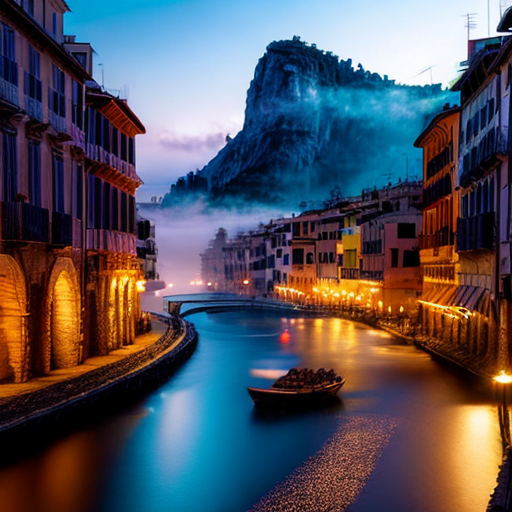The Roman Empire: Italy's Ancient Legacy
The Roman Empire stands as one of Italy's most significant historical milestones, shaping the country's culture, architecture, and governance for centuries to come. From its founding in 27 BC to its eventual collapse in 476 AD, the empire witnessed major events such as the reign of Julius Caesar, the construction of iconic structures like the Colosseum and the Pantheon, and the spread of Roman law and language throughout Europe. Italy's ancient legacy as the heart of the Roman Empire continues to captivate historians and tourists alike, offering a glimpse into a bygone era of power and influence.
The Renaissance: Italy's Cultural Rebirth
One major historical event in Italy is the eruption of Mount Vesuvius in 79 AD, which buried the ancient Roman cities of Pompeii and Herculaneum under layers of volcanic ash and pumice. This catastrophic event preserved the cities remarkably well, providing archaeologists with invaluable insights into the daily life, architecture, and culture of the Roman Empire. The excavation of Pompeii and Herculaneum has revealed a wealth of information about ancient Roman society, including their art, cuisine, and even the explicit nature of their graffiti.
The Renaissance marked another major historical event in Italy, known as the country's cultural rebirth. Beginning in the 14th century, this period saw a flourishing of art, literature, and scientific advancements that transformed Italy into a hub of creativity and innovation. Iconic figures such as Leonardo da Vinci, Michelangelo, and Galileo Galilei emerged during this time, leaving a lasting impact on the world of art, science, and philosophy. The Renaissance not only revitalized Italy's cultural landscape but also influenced the development of Western civilization as a whole.
Unification and Independence: Italy's Road to Nationhood

Unification and independence were pivotal historical events in Italy's journey towards nationhood. Throughout the 19th century, Italy was fragmented into various city-states and regions, each under foreign rule or local governance. The movement for Italian unification, known as the Risorgimento, gained momentum with the leadership of figures like Giuseppe Garibaldi and Count Camillo di Cavour. The Risorgimento culminated in 1861 with the proclamation of the Kingdom of Italy, under the rule of King Victor Emmanuel II. This marked the beginning of a unified Italian state, bringing together disparate regions and paving the way for a shared national identity.
The struggle for independence also played a significant role in Italy's history, particularly in the context of foreign occupation. During the 19th century, Italy faced domination by foreign powers such as Austria, France, and Spain, leading to widespread discontent and resistance among the Italian populace. The Wars of Italian Independence, including the First and Second Wars of Italian Unification, were instrumental in driving out foreign forces and asserting Italy's sovereignty. These conflicts not only shaped Italy's territorial boundaries but also fostered a sense of national pride and unity among its people.
The unification and independence of Italy were not without challenges and setbacks. The process of nation-building faced opposition from conservative forces, internal divisions, and external interference. The struggle for unification also involved armed conflicts, political maneuvering, and diplomatic negotiations. Despite these obstacles, the determination and resilience of Italian patriots ultimately prevailed, leading to the establishment of a unified Italian state. The road to nationhood was marked by sacrifices, compromises, and triumphs, laying the foundation for modern Italy as a sovereign and independent nation.
The legacy of Italy's unification and independence continues to resonate in the country's cultural, political, and social fabric. The Risorgimento remains a source of inspiration and pride for Italians, symbolizing their collective struggle for freedom and unity. The achievements of Italian patriots and leaders in the quest for nationhood have left an indelible mark on Italy's history and identity. Today, Italy stands as a testament to the enduring spirit of independence and the power of unity in overcoming adversity. The journey towards nationhood serves as a reminder of Italy's rich heritage and the enduring legacy of its quest for freedom and self-determination.
World Wars and Post-War Reconstruction: Italy's Modern Challenges
One major historical event in Italy is the eruption of Mount Vesuvius in 79 AD, which buried the cities of Pompeii and Herculaneum under layers of volcanic ash. These cities were preserved remarkably well, providing archaeologists with a unique glimpse into ancient Roman life.
The World Wars and post-war reconstruction were major historical events that shaped Italy's modern challenges. During World War I, Italy fought alongside the Allies but faced internal divisions and economic hardships. The aftermath of the war saw political turmoil, social unrest, and the rise of fascism under Benito Mussolini. Italy's involvement in World War II further exacerbated its struggles, leading to widespread destruction, loss of life, and occupation by foreign powers. The post-war period brought about a period of reconstruction and recovery, as Italy rebuilt its economy, infrastructure, and political institutions. The legacy of the World Wars continues to influence Italy's modern challenges, including issues of national identity, historical memory, and international relations.

